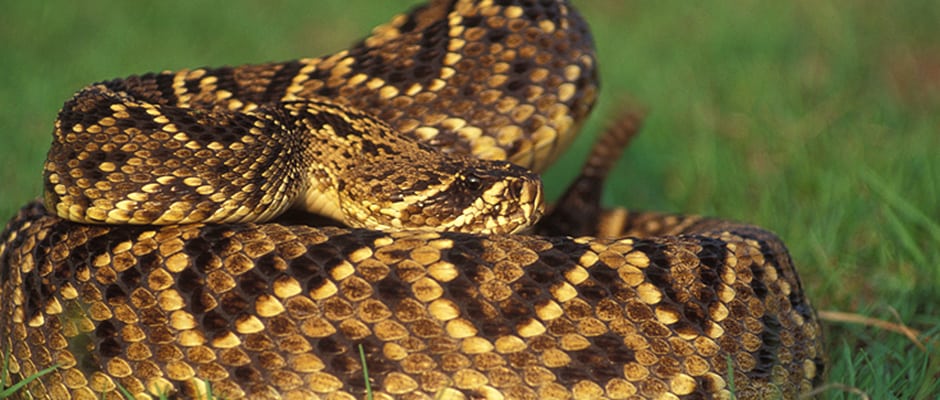Share this article
Rattlesnake Species Faces Problems with Fire Prevention
While the drought-stricken western United States is doing all it can to prevent wildfires, in the eastern portion of the country fire prevention spells doom for the once-thriving eastern diamondback rattlesnake (Crotalus adamanteus).
In a recent study published in PLOS ONE, Jennifer Fill, lead author and a recent graduate of the University of South Carolina, along with other researchers, found that forest fire prevention in the savannas of the Southeast has led to loss of habitat for the rattlesnake.
“Fire is so important to the eastern diamondback’s habitat that fire exclusion is a serious barrier to diamondback conservation,” Fill said.
Eastern diamondbacks have lost 97 percent of their original habitat and continue to decline in number. In fact, eastern diamondbacks are considered endangered in North Carolina, and the last verified sighting of the snake in Louisiana was in 1995.
Previously, forest fires maintained the staple habitat for the eastern diamondback rattlesnake, which prefers the open-canopy pine forests and savannas that are disappearing throughout its territory. Longleaf pines are the characteristic trees of these environments and are highly fire resistant. These trees are an integral part of habitat recovery after forest fires.
Longleaf pine initially spends several years in the ground layer in the “grass stage,” during which it grows minimally in height. “When fires burn through the ground layer, they burn from the outside of the needles in,” Fill said. “And as soon as that fire creeps toward that growing bud, the needles become so dense that they essentially snuff out the fire.”
After six to twelve years the longleaf pine goes through a quick growth spurt during which it is relatively vulnerable to fire. During this time it grows a thick, fire resistant bark and, finally, reaches maturity. Fire thins clusters of these trees, creating a well-spaced pine forest with dense grass cover, the perfect environment for diamondback food sources such as rabbits, cotton rats and fox squirrels.
“Longleaf seeds need bare mineral soil on which to germinate,” Fill said. “When fires come through they burn away the grass and prepare the soil for longleaf to germinate on.”
Without fires to allow for germination and to suppress the competition, dense temperate hardwood forests have taken over in the Southeast, replacing what used to be open-canopy longleaf pine forests and changing the entire ecosystem.
Fill and other scientists tracked eight eastern diamondbacks over the course of a year using surgically implanted radio transmitters. Their objective was to determine whether diamondbacks are using marsh land as surrogate habitats. They found that the rattlesnakes do utilize marshes as habitat, but, on a larger scale, the marshes that the snakes were found in were always in proximity to open-canopy pine forests.
There is no reliable estimate for the number of eastern diamondbacks left in the wild, but Fill says they are disappearing fast and that conservationists will need to continue to push to have the rattlesnakes listed on the endangered species list. Scientists know so little about this top predator that there could be trickle-down side effects to losing it.
In addition to habitat loss, rattlesnakes face predation by humans who kill them out of fear. Although they are venomous, eastern diamondbacks pose little threat to public safety. According to the Center for Biological Diversity, more people are killed each year by lightning strikes and bee stings than diamondbacks.
“I think that we are moving in the right direction with promoting prescribed fire in the region,” Fill said. “Supporting a positive attitude toward eastern diamondbacks is key.”
Header Image:
Eastern diamondback rattlesnakes are declining in number throughout the southeastern U.S. due to habitat loss and hunting.
Image Credit: D. Bruce Means courtesy of the Center for Biological Diversity








